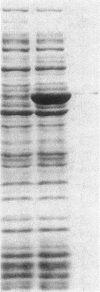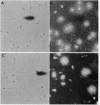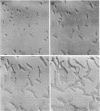Abstract
Colicin E1 is a small plasmid, containing the cea gene for colicin, the most prominent product of the plasmid. Colicin is a 56-kilodalton bacteriocin which is especially toxic to Escherichia coli cells that do not contain the plasmid. Under normal growth conditions very low levels of the plasmid are produced as a result of cea gene repression by the host LexA protein. Conditions that lower the concentration of LexA protein result in elevated levels of colicin synthesis. The LexA protein concentration can be lowered by exposing the cells to DNA-damaging reagents such as UV light or mitomycin C. This is because DNA damage signals the host SOS response; the response leads to activation of the RecA protease which degrades the LexA protein. DNA-damaging reagents result in very high levels of colicin synthesis and subsequent death of plasmid-bearing cells. Elevated levels of colicin are also produced in mutants of E. coli that are deficient in LexA protein. We found that comparably high levels of colicin can be produced in such mutants in the absence of cell death. In lexA strains carrying a defective LexA repressor, colicin synthesis shows a strong temperature dependence. Ten to twenty times more colicin is synthesized at 42 degrees C. This sharp dependence of synthesis on temperature suggests that there are factors other than the LexA protein which regulate colicin synthesis.
Full text
PDF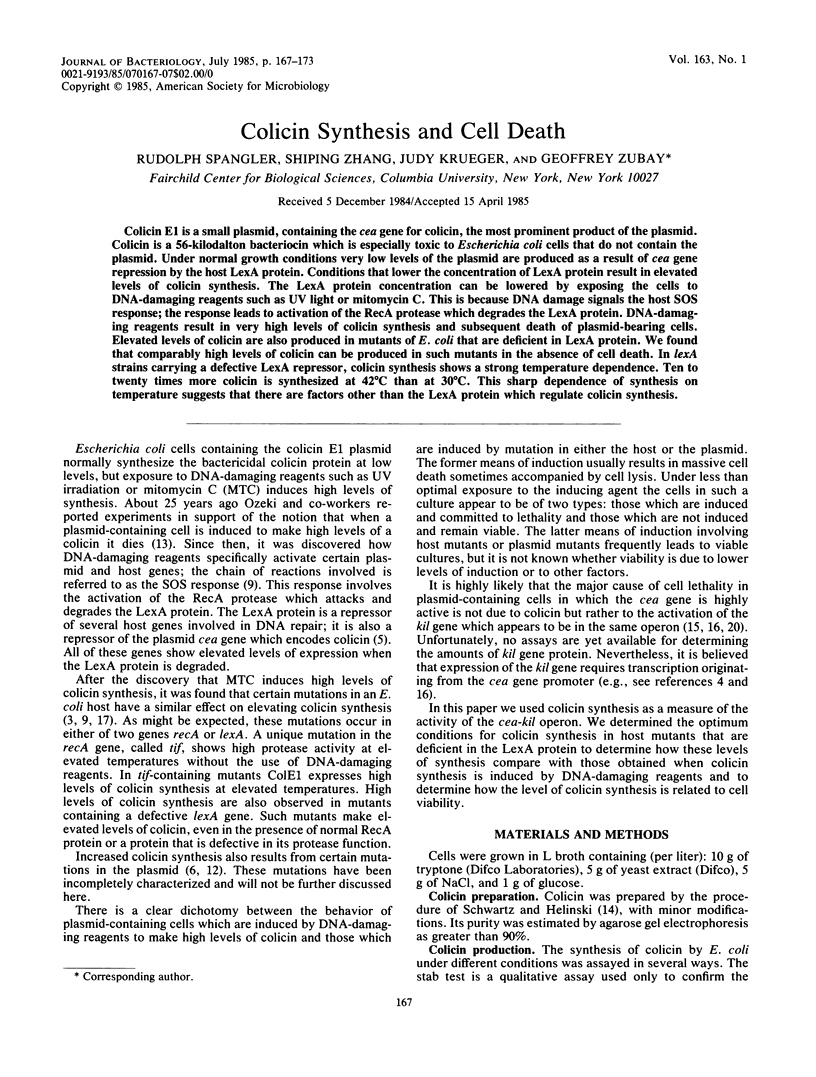
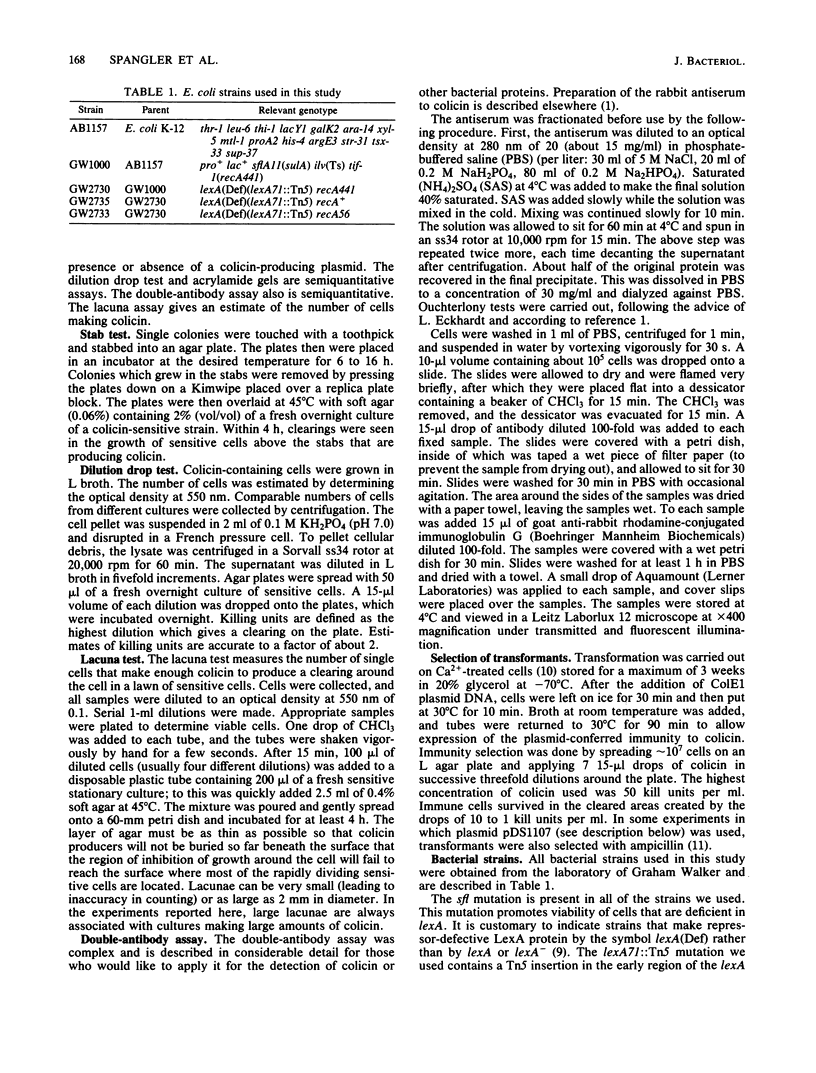
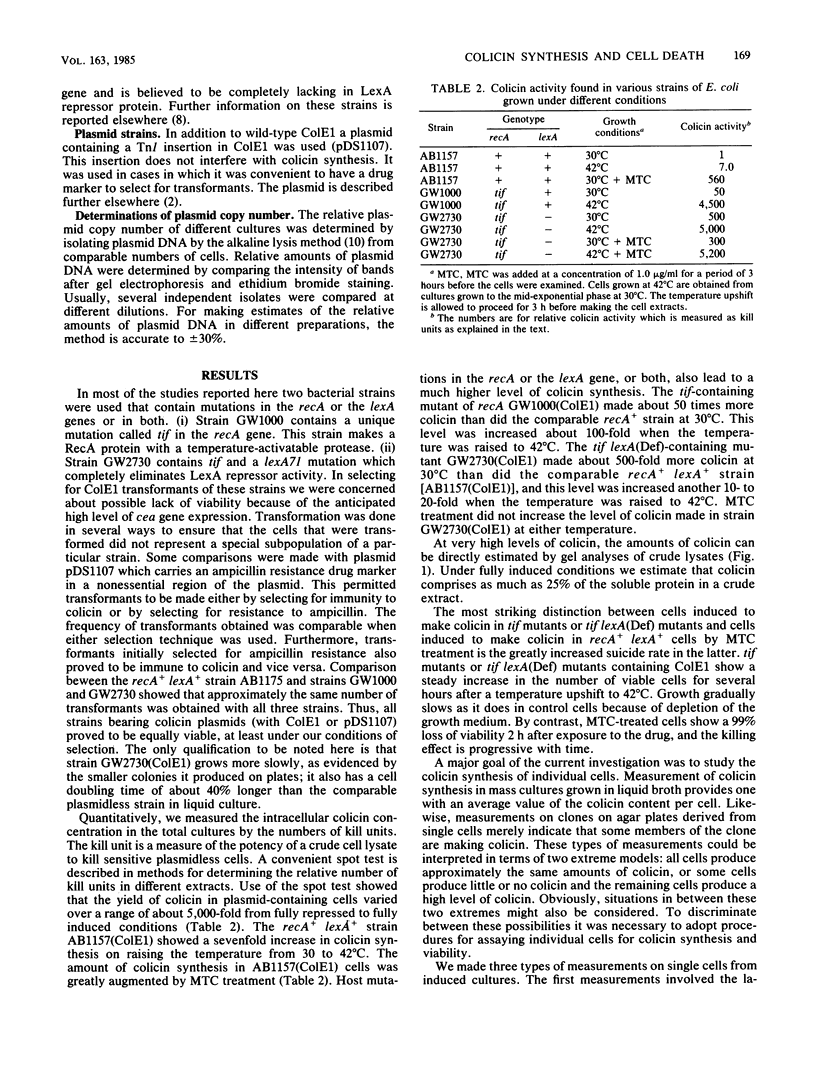
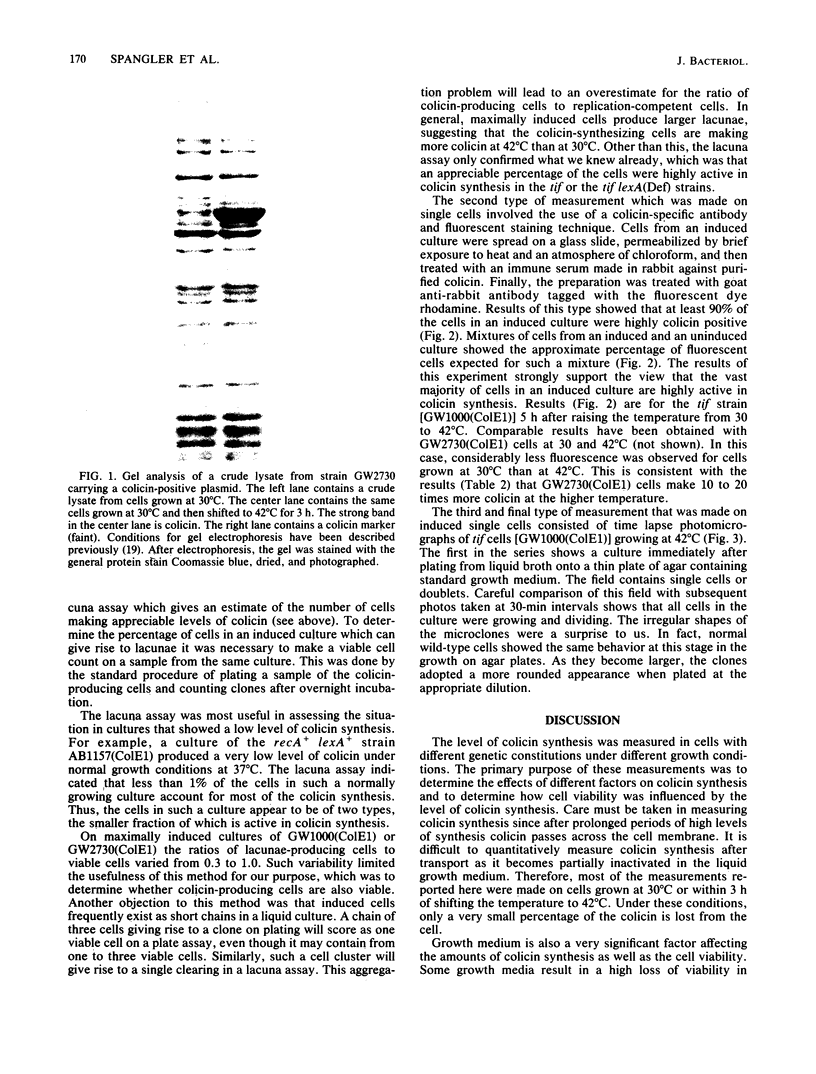
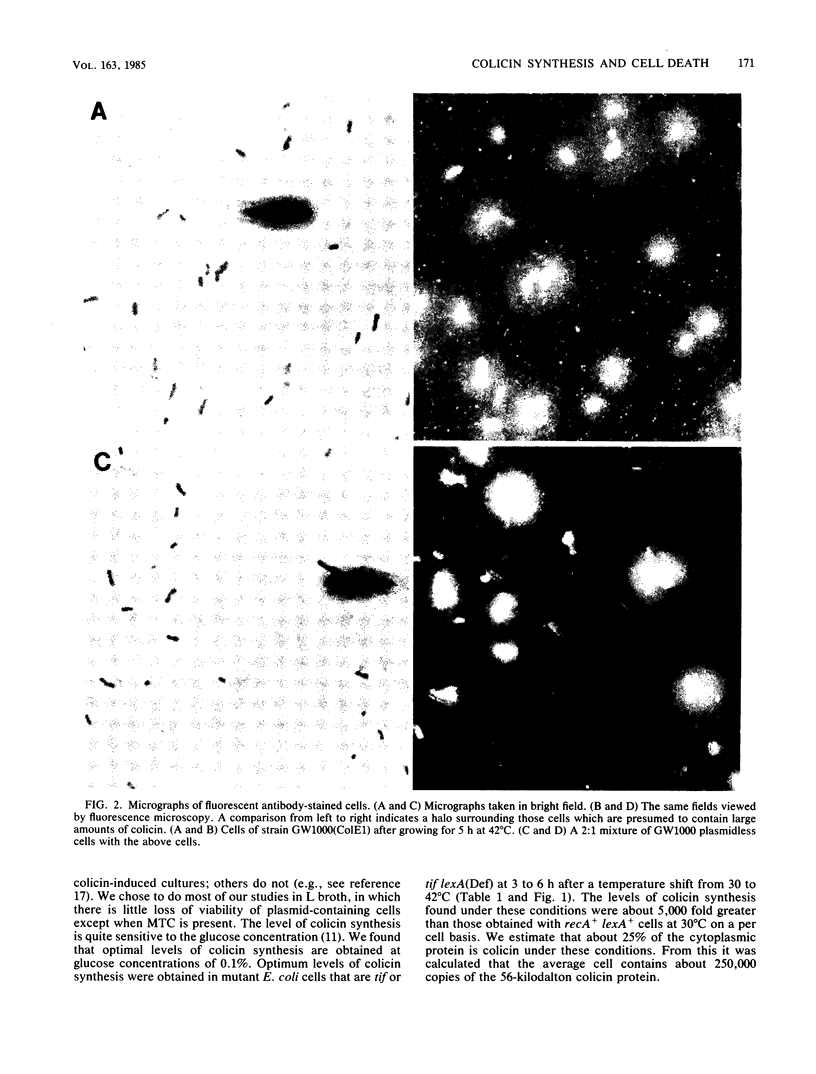
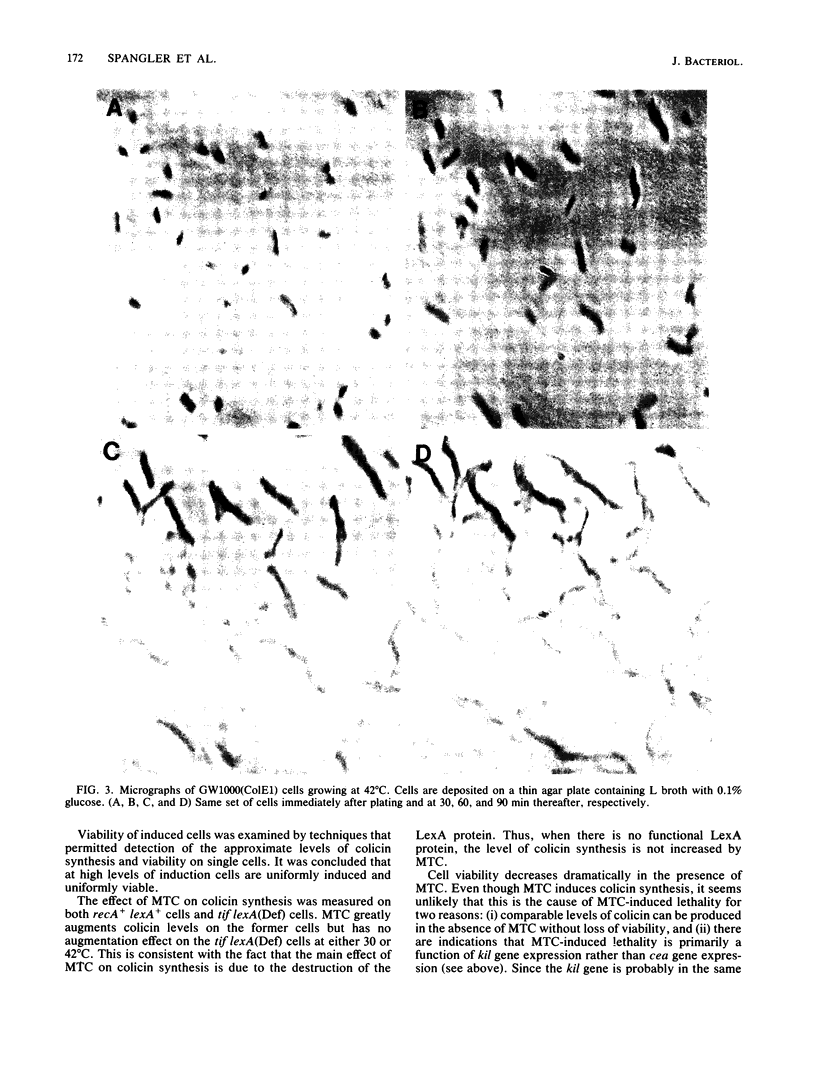
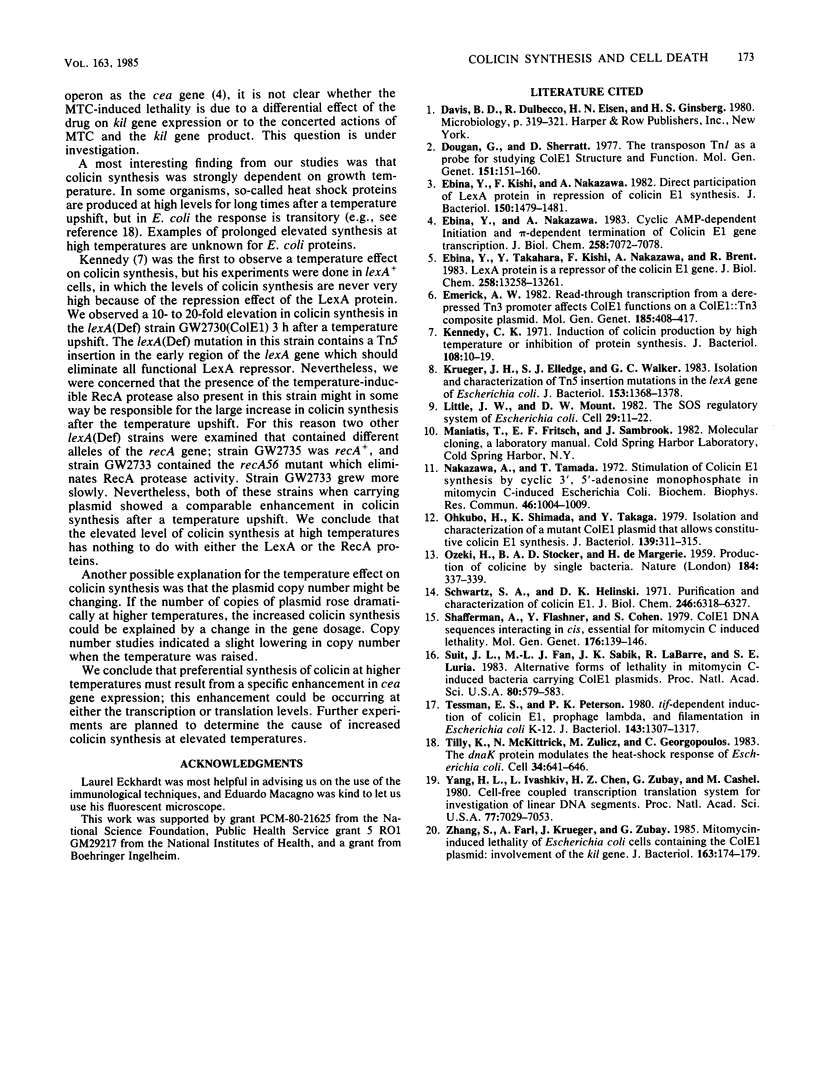
Images in this article
Selected References
These references are in PubMed. This may not be the complete list of references from this article.
- Dougan G., Sherratt D. The transposon Tn1 as a probe for studying ColE1 structure and function. Mol Gen Genet. 1977 Mar 7;151(2):151–160. doi: 10.1007/BF00338689. [DOI] [PubMed] [Google Scholar]
- Ebina Y., Kishi F., Nakazawa A. Direct participation of lexA protein in repression of colicin E1 synthesis. J Bacteriol. 1982 Jun;150(3):1479–1481. doi: 10.1128/jb.150.3.1479-1481.1982. [DOI] [PMC free article] [PubMed] [Google Scholar]
- Ebina Y., Nakazawa A. Cyclic AMP-dependent initiation and rho-dependent termination of colicin E1 gene transcription. J Biol Chem. 1983 Jun 10;258(11):7072–7078. [PubMed] [Google Scholar]
- Ebina Y., Takahara Y., Kishi F., Nakazawa A., Brent R. LexA protein is a repressor of the colicin E1 gene. J Biol Chem. 1983 Nov 10;258(21):13258–13261. [PubMed] [Google Scholar]
- Emerick A. W. Read-through transcription from a derepressed Tn3 promoter affects ColE1 functions on a ColE1::Tn3 composite plasmid. Mol Gen Genet. 1982;185(3):408–417. doi: 10.1007/BF00334132. [DOI] [PubMed] [Google Scholar]
- Kennedy C. K. Induction of colicin production by high temperature or inhibition of protein synthesis. J Bacteriol. 1971 Oct;108(1):10–19. doi: 10.1128/jb.108.1.10-19.1971. [DOI] [PMC free article] [PubMed] [Google Scholar]
- Krueger J. H., Elledge S. J., Walker G. C. Isolation and characterization of Tn5 insertion mutations in the lexA gene of Escherichia coli. J Bacteriol. 1983 Mar;153(3):1368–1378. doi: 10.1128/jb.153.3.1368-1378.1983. [DOI] [PMC free article] [PubMed] [Google Scholar]
- Little J. W., Mount D. W. The SOS regulatory system of Escherichia coli. Cell. 1982 May;29(1):11–22. doi: 10.1016/0092-8674(82)90085-x. [DOI] [PubMed] [Google Scholar]
- Nakazawa A., Tamada T. Stimulation of colicin E 1 synthesis by cyclic 3', 5'-adenosine monophosphate in mitomycin C-induced Escherichia coli. Biochem Biophys Res Commun. 1972 Jan 31;46(2):1004–1010. doi: 10.1016/s0006-291x(72)80241-9. [DOI] [PubMed] [Google Scholar]
- OZEKI H., STOCKER B. A., DE MARGERIE H. Production of colicine by single bacteria. Nature. 1959 Aug 1;184:337–339. doi: 10.1038/184337a0. [DOI] [PubMed] [Google Scholar]
- Ohkubo H., Shimada K., Takagi Y. Isolation and characterization of a mutant ColE1 plasmid that allows constitutive colicin E1 synthesis. J Bacteriol. 1979 Jul;139(1):311–315. doi: 10.1128/jb.139.1.311-315.1979. [DOI] [PMC free article] [PubMed] [Google Scholar]
- Schwartz S. A., Helinski D. R. Purification and characterization of colicin E1. J Biol Chem. 1971 Oct 25;246(20):6318–6327. [PubMed] [Google Scholar]
- Shafferman A., Flashner Y., Cohen S. ColE1 DNA sequences interacting in cis, essential for mitomycin-C induced lethality. Mol Gen Genet. 1979 Oct 2;176(1):139–146. doi: 10.1007/BF00334305. [DOI] [PubMed] [Google Scholar]
- Suit J. L., Fan M. L., Sabik J. F., Labarre R., Luria S. E. Alternative forms of lethality in mitomycin C-induced bacteria carrying ColE1 plasmids. Proc Natl Acad Sci U S A. 1983 Jan;80(2):579–583. doi: 10.1073/pnas.80.2.579. [DOI] [PMC free article] [PubMed] [Google Scholar]
- Tessman E. S., Peterson P. K. tif-dependent induction of colicin E1, prophage lambda, and filamentation in Escherichia coli K-12. J Bacteriol. 1980 Sep;143(3):1307–1317. doi: 10.1128/jb.143.3.1307-1317.1980. [DOI] [PMC free article] [PubMed] [Google Scholar]
- Tilly K., McKittrick N., Zylicz M., Georgopoulos C. The dnaK protein modulates the heat-shock response of Escherichia coli. Cell. 1983 Sep;34(2):641–646. doi: 10.1016/0092-8674(83)90396-3. [DOI] [PubMed] [Google Scholar]
- Yang H. L., Ivashkiv L., Chen H. Z., Zubay G., Cashel M. Cell-free coupled transcription-translation system for investigation of linear DNA segments. Proc Natl Acad Sci U S A. 1980 Dec;77(12):7029–7033. doi: 10.1073/pnas.77.12.7029. [DOI] [PMC free article] [PubMed] [Google Scholar]
- Zhang S. P., Faro A., Zubay G. Mitomycin-induced lethality of Escherichia coli cells containing the ColE1 Plasmid: involvement of the kil gene. J Bacteriol. 1985 Jul;163(1):174–179. doi: 10.1128/jb.163.1.174-179.1985. [DOI] [PMC free article] [PubMed] [Google Scholar]



